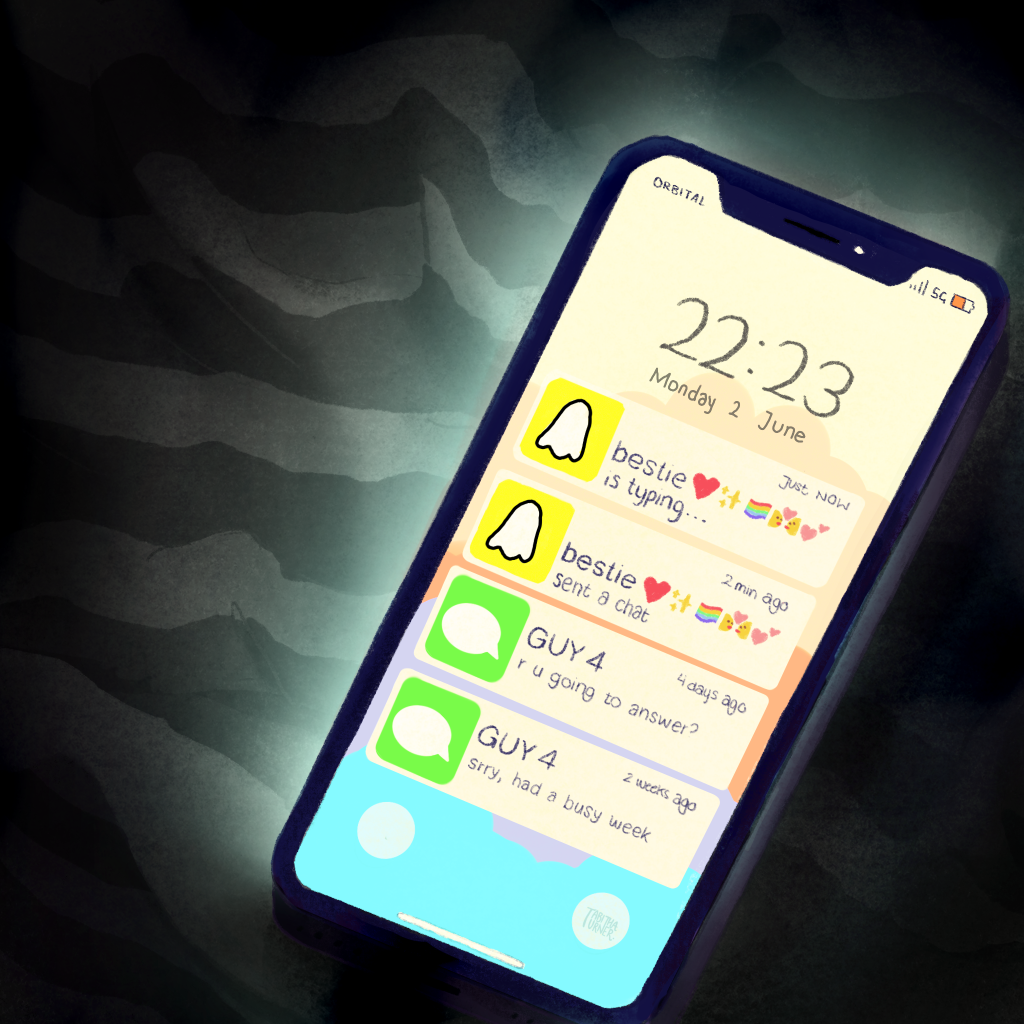
I’m sure it’s happened to us all; a message missed, leading to a glowing, bolded notification, over a day old, glaring out at us through the screen. The guilt, and the embarrassment builds. What to do? Do you reply, as if nothing happened? Do you respond with a hasty apology? Or, do you leave it, the aforementioned guilt and embarrassment growing until the message is buried far down your recents. Maybe one day you’ll open it, leaving it “on read” – after all, after a week or two (you tell yourself to ease your conscience) who’s checking? Or maybe you’ll “air” it, on and on and on, letting it fossilise far down until you almost (only almost) forget about it.
Of course, it’s not always that dramatic. If it’s a good friend, it’s easy to brush it off. In the complex web of young adult social interactions, such a faux pas can be quickly forgotten. The sentiment stands, however. Instant messages, as the name implies, are intended to be received instantly. Any deviation, and things start to get messy.
The first text message was sent nearly thirty years ago – in fact, the three decade anniversary is coming up on the third of December this year. However, it only became widely common amongst normal people at the millennium. Amazing, then, that by 2007 the number of texts sent had surpassed the number of phone calls, and among young people nowadays, many would rather suffer painful consequences than make a telephone call, relying almost exclusively on instant messaging apps. Written text has become the norm, all over again. Astounding, really, that in an era of letter-writing, then telegrams, the idea of speaking to a party not present was the stuff of dreams, and now we’ve boomeranged back to writing, with none of the nuance of a spoken voice. It’s endlessly easy to misconstrue that which is hastily written, with issues rising from a range of sources, from typos to sarcasm, yet it is commonly perceived as the “easy option” for distance communication.
Instant messaging is constantly available. Maybe that’s the appeal – to have a phone conversation, the other party has to pick up, it has to be held at a time convenient for both. Even leaving a voicemail is a monologue left for later, not intended to be heard immediately. With texts, it’s impossible to avoid. With a phone buzzing in your pocket, and the text right there to see, you are confronted with the communication, like it or not.
Snapchat, released in 2011 and now the most popular messaging app for young people, solves some of these issues… and causes more of its own. While Apple allows you to deconfigure read receipts on texts and iMessages, leaving you with slightly more freedom to respond when you choose, Snapchat removes this ability. In order to read a message on Snapchat, you have no choice but to notify the other party. There are endless articles online dedicated to explaining exactly what each Snapchat behaviour means – how many minutes between replies spells interest, how many means hopeless. Whether leaving a message on read is really “letting someone down easy”. Whether someone is a real friend if they’re bad at replying, if they don’t keep up your streak, if they don’t respond to your carefully crafted story posts enough.
It’s a minefield, and it’s one that worsens the mental health of teenagers and young adults every day. A combination of over analysing the behaviours of others, carefully constructing one’s own behaviour to send the right message, and worrying about not being “active enough” to make it all matter at all, leads to an environment in which no one is quite authentic, or quite at ease.
With phones in our pockets all day every day and right there on the bedside cabinet at night, and the pressure to be connected 24/7, whichever your chosen app for instant communication, it’s getting harder and harder to avoid for any length of time. And the pervasiveness of the online sphere only grows with each passing year – over the course of the COVID-19 pandemic, screen time rose, for each user, an average of five hours across all devices. Okay, you could reason, but the world was on lockdown, surely that explains it? And it would, if the numbers had dropped back down as restrictions have lifted around the country (and the world) – but they haven’t. The average iPhone user’s daily screen time remains between four and six hours. It is reported that one in five teenagers loses sleep in order to spend more time online, citing the “fear of missing out” as one of the main reasons they sacrifice their wellbeing.
I’m twenty years old – my highly formative teenage years are through. With the ever-growing reach of social media and instant messaging, I fear for the young teens entering the online world only to discover a plethora of unwritten rules and social cues to absorb and embody.
Image Credit: Illustration by Tabitha Turner
